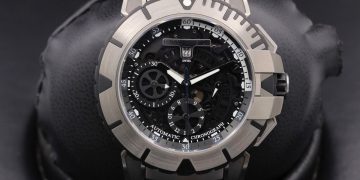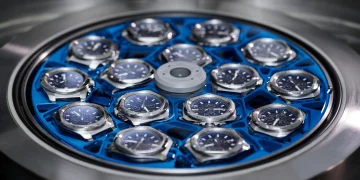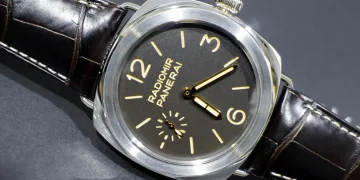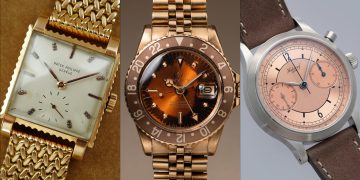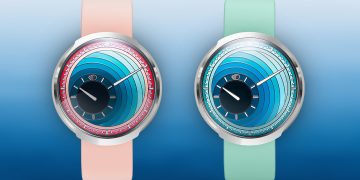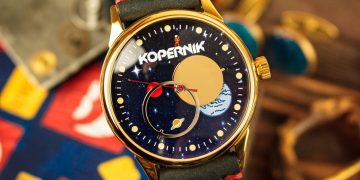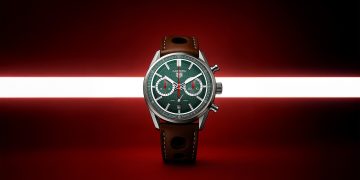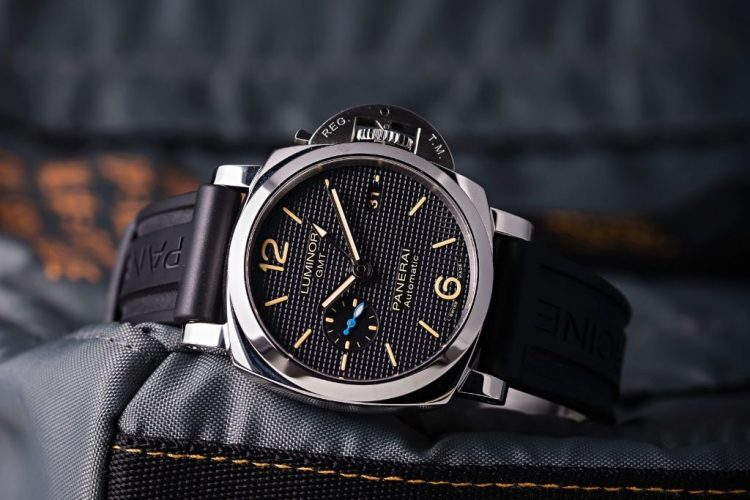In the rapidly evolving world of watchmaking, technology has always played a pivotal role in shaping the functionality, design, and performance of timepieces. However, in recent years, Artificial Intelligence (AI) and Machine Learning (ML) have emerged as groundbreaking technologies that are poised to revolutionize not only traditional horology but also smartwatches and hybrid models. As the watch industry continues to embrace the potential of these advanced technologies, watchmakers are exploring how AI and ML can improve the design process, enhance user experience, and even increase the accuracy and longevity of timepieces.
In this article, we’ll explore the various applications of AI and ML in the watchmaking industry, from optimizing design processes to personalizing user experience and even improving watch maintenance and repairs.
The Rise of Artificial Intelligence and Machine Learning in Watchmaking
To understand how AI and ML are transforming watchmaking, it’s essential to define what these technologies entail.
Artificial Intelligence (AI) refers to the simulation of human intelligence in machines that are programmed to think, learn, and problem-solve. In watchmaking, AI could be used in a range of ways, from automating production processes to designing more innovative products.
Machine Learning (ML) is a subset of AI that involves the ability of a machine to learn from data and improve over time without being explicitly programmed. In watch design and functionality, ML can help systems better understand user preferences, predict wear patterns, and even assist in the optimization of timekeeping accuracy.
By integrating AI and ML, watchmakers are able to unlock new potential in both traditional and modern timepieces, enhancing everything from design aesthetics to timekeeping performance and user interaction.
AI in Watch Design: Revolutionizing Creativity and Precision
One of the most exciting applications of AI in watchmaking is its potential to enhance the design process. Traditional watch design often involves a complex balance of creativity, aesthetics, and functionality, with a heavy reliance on the expertise of skilled artisans and designers. AI is now assisting in streamlining this process, enabling designers to create more innovative, complex, and personalized timepieces with greater efficiency and precision.
AI-Driven Design Tools and Software
AI-powered design tools can help streamline the watch creation process by analyzing historical design trends, user preferences, and current market demands to generate optimal design concepts. Using these tools, watch designers can explore new materials, shapes, and finishes, while AI algorithms predict how these designs will resonate with potential customers. Furthermore, AI systems can simulate the behavior of different materials under various conditions (such as temperature changes or moisture exposure), helping designers select the best materials for durability and aesthetics.
Brands like Audemars Piguet and Vacheron Constantin are already experimenting with AI-driven design platforms to predict consumer trends and optimize new collections, ensuring their designs remain relevant and appealing in an ever-changing market.
Generating Customized Designs through AI
AI also holds significant potential in the realm of personalization. Watches are increasingly seen as more than just timekeeping tools; they are status symbols and personal statements. With AI, customers can collaborate with designers to create highly personalized timepieces, such as choosing dial colors, materials, and engravings. AI algorithms can assist in quickly generating a variety of design options, allowing customers to tailor their watches to their unique tastes.
Additionally, AI can analyze customer feedback and design preferences, enabling watch brands to offer limited-edition collections or customized features for individual customers based on their desires.
Machine Learning for Enhancing Watch Functionality
When it comes to improving the functionality of watches, Machine Learning plays a significant role in transforming both smartwatches and mechanical timepieces.
Machine Learning in Smartwatches: Predicting User Needs
Smartwatches have evolved into advanced devices capable of monitoring health metrics, providing notifications, and interacting with other smart devices. By integrating Machine Learning algorithms, these watches can provide a highly personalized experience that adapts over time based on the wearer’s habits.
For example, ML can help smartwatches predict activity levels, track sleep patterns, and provide health-related insights based on individual user data. With the help of continuous learning, the device can improve the accuracy of health metrics, such as heart rate monitoring, stress levels, or even predicting when the user is about to enter a high-intensity workout or need rest.
Brands like Apple, Garmin, and Fitbit have already integrated machine learning models into their smartwatches to deliver these personalized health insights, and it’s only expected to improve in the coming years.
Improving Accuracy and Efficiency in Mechanical Movements
For traditional mechanical watches, Machine Learning can be used to optimize timekeeping accuracy and predict wear patterns. For example, ML algorithms can analyze data from movement tests and predict the longevity and performance of certain components (like the balance wheel, escapement, or springs) over time. With this data, watchmakers can make design adjustments that improve efficiency, reduce friction, and minimize mechanical errors.
In the long run, ML can also help anticipate potential issues with a movement, predicting when maintenance or repairs are necessary based on wear and tear. For collectors of high-end mechanical watches, this type of predictive technology could help in the proactive maintenance scheduling of their timepieces, preventing unexpected failures and preserving the watch’s longevity.

AI and ML in Watch Manufacturing: Streamlining Production Processes
AI and Machine Learning also hold significant promise for streamlining the production and manufacturing processes in watchmaking. Assembling high-quality watches with numerous components requires precision, and even the smallest errors can impact the final product.
Automated Assembly and Quality Control
One area where AI has proven invaluable is in automated assembly and quality control. Watch movements are made up of many small, intricate components that need to be assembled with high accuracy. AI-powered robots can be programmed to assemble these components with near-perfect precision, reducing human error in the process. Additionally, AI can be used for real-time quality control, analyzing each part during the assembly process to detect defects or inconsistencies that would otherwise go unnoticed.
AI-driven robots can also be used for highly repetitive tasks such as polishing or engraving, ensuring consistent results and reducing time spent on manual labor.
Predictive Maintenance in Manufacturing
Just as Machine Learning can predict when a mechanical watch may need maintenance, it can also predict when manufacturing equipment requires servicing. By continuously monitoring machine performance, AI systems can identify patterns that suggest an impending issue, allowing manufacturers to schedule maintenance before a breakdown occurs. This predictive maintenance minimizes production downtime, ensuring the continuous flow of manufacturing operations.
AI in Enhancing Watch User Experience
Beyond design and functionality, AI and ML are significantly enhancing the overall user experience of watch wearers, both in mechanical and smartwatches. From adaptive interfaces to context-aware features, these technologies are making watches smarter and more responsive.
Voice Assistance and AI-Powered Interfaces
With the integration of AI-powered voice assistants like Siri, Google Assistant, and Alexa into smartwatches, users can now interact with their devices seamlessly. AI is enabling voice commands to control functions such as setting alarms, sending messages, and controlling smart home devices—all without having to touch the watch. As voice recognition technology improves, AI will allow watches to become even more intuitive and context-aware, recognizing commands based on environmental factors or user behavior.
Contextual Functionality Based on User Preferences
For both smartwatches and traditional watches with integrated technology, AI can adjust watch features based on user context. For example, if a user is at the gym, their smartwatch could automatically switch to a workout mode, displaying metrics such as heart rate or calories burned. Similarly, AI can detect when the user is in a meeting and mute notifications to ensure no interruptions, or if the wearer is traveling, the watch could display local time or provide flight details.
Conclusion: The Future of AI and ML in Watchmaking
The integration of AI and Machine Learning into watchmaking is a game-changer. From revolutionizing the design process to enhancing functionality, efficiency, and user experience, these technologies are pushing the boundaries of traditional watchmaking and smartwatch innovation. As AI and ML continue to evolve, we can expect even more exciting advancements, such as predictive analytics for mechanical watches, smarter user interfaces, and even greater personalization options for consumers.
In the years to come, AI and Machine Learning will likely become core elements of watchmaking, whether it’s for fine-tuning mechanical movements or offering more sophisticated digital experiences. The future of horology looks to be increasingly intelligent, and these technologies will continue to play a pivotal role in shaping the timepieces of tomorrow.



